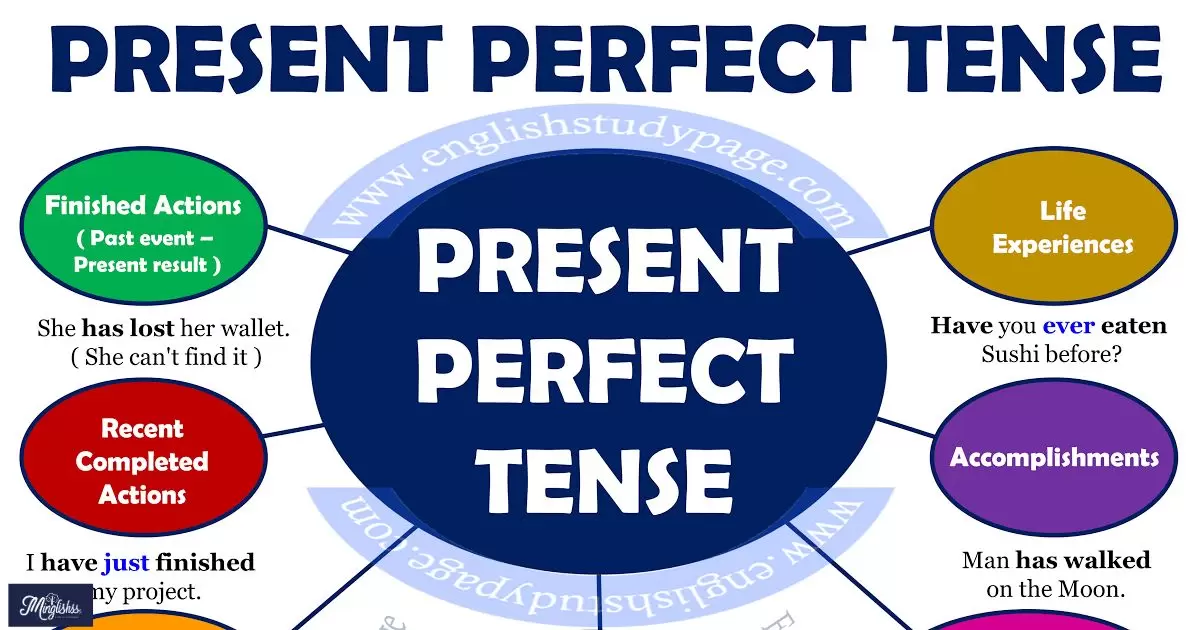The present perfect tense is one of the most versatile and commonly used tenses in the English language. It connects the past with the present, allowing speakers to discuss experiences, actions, or events that have relevance to the current moment.
Whether you’re sharing life experiences, describing recent actions, or expressing achievements, the present perfect tense is essential.
In this guide, we’ll explore the present perfect tense in depth. We’ll cover its formation, different usages, and provide plenty of examples to help you grasp its nuances. Additionally, we’ll address common mistakes and give you tips to use the present perfect accurately in your conversations and writing.
By the end of this article, you’ll have a solid understanding of how to use the present perfect tense effectively in English. Let’s dive in and master this important tense together!
What is the Present Perfect Tense?
The present perfect tense is used to describe actions or events that occurred at an unspecified time before now. The exact time is not important, which distinguishes this tense from the simple past tense. It is also used to describe actions that started in the past and continue into the present.
Formation of the Present Perfect Tense
- Structure: The present perfect tense is formed by combining the auxiliary verb “have” or “has” with the past participle of the main verb.
- Examples:
- I have finished my homework.
- She has visited Paris several times.
- They have lived here for five years.
Note: Use “have” with I, you, we, and they, and “has” with he, she, and it.
Uses of the Present Perfect Tense
The present perfect tense is versatile and can be used in various contexts. Here are the main uses:
1. To Describe Life Experiences

- Example: She has traveled to many countries.
- Explanation: This use indicates that the person has had the experience of traveling, without specifying when it happened.
2. To Describe Actions That Occurred at an Unspecified Time
- Example: I have seen that movie.
- Explanation: The exact time when the action occurred is not specified, but it is relevant to the present.
3. To Describe Recent Actions with Present Relevance
- Example: He has just finished his lunch.
- Explanation: The action is recent and relevant to the current moment.
4. To Describe Actions That Started in the Past and Continue to the Present
- Example: They have lived in this city for ten years.
- Explanation: The action started in the past and is still ongoing.
5. To Describe Achievements
- Example: We have completed the project successfully.
- Explanation: The focus is on the achievement itself rather than when it was accomplished.
Present Perfect Continuous Tense & How to Use With Example
Common Mistakes with the Present Perfect Tense
Using the present perfect tense can be tricky, especially when it comes to differentiating it from other past tenses. Here are some common mistakes:
1. Using Specific Time Expressions with Present Perfect
- Incorrect: I have seen that movie yesterday.
- Correct: I saw that movie yesterday.
- Explanation: The present perfect tense should not be used with specific time expressions like “yesterday” or “last year.”
2. Confusing Present Perfect with Simple Past
- Incorrect: He has gone to the store an hour ago.
- Correct: He went to the store an hour ago.
- Explanation: Use the simple past tense for actions completed at a specific time in the past.
3. Overusing “Since” Instead of “For”
- Incorrect: They have lived here since ten years.
- Correct: They have lived here for ten years.
- Explanation: Use “for” with a period of time and “since” with a specific point in time.
Sub-Categories of Sentences Using Present Perfect Tense
To understand the present perfect tense better, let’s look at how it functions in different types of sentences.
1. Declarative Sentences
- Usage: Make a statement using the present perfect tense.
- Examples:
- She has read that book many times.
- We have finished our work.
- I have never been to Australia.
- They have already eaten dinner.
- He has written three novels.
Note: Declarative sentences state facts or experiences without focusing on the time of the action.
2. Interrogative Sentences
- Usage: Ask a question using the present perfect tense.
- Examples:
- Have you ever visited Japan?
- Has she completed her assignment?
- Have they seen the latest movie?
- Has he called you yet?
- Have we made all the arrangements?
Note: Interrogative sentences in the present perfect tense start with “have” or “has.”
3. Negative Sentences
- Usage: Make a negative statement using the present perfect tense.
- Examples:
- I have not finished my homework yet.
- She has never traveled abroad.
- They have not met each other before.
- We have not decided on a date.
- He has not eaten anything all day.
Note: Negative sentences in the present perfect tense use “not” after “have” or “has.”
4. Conditional Sentences

- Usage: Express a condition and its result using the present perfect tense.
- Examples:
- If you have finished your work, we can go out.
- If she has seen the movie, she will understand the reference.
- If they have eaten, we don’t need to cook more.
- If he has completed the task, he can take a break.
- If we have saved enough money, we can buy a new car.
Note: Conditional sentences in the present perfect tense often imply that the condition is relevant to the present.
5. Exclamatory Sentences
- Usage: Express strong emotion or surprise using the present perfect tense.
- Examples:
- How much you have grown!
- What a great job you have done!
- How quickly time has passed!
- What an impact you have made!
- How much they have achieved!
Note: Exclamatory sentences in the present perfect tense emphasize strong emotions or reactions to recent experiences or actions.
Answers to Key Questions
Q1: When should I use the present perfect tense?
A1: Use the present perfect tense to describe actions or events that occurred at an unspecified time before now, or to describe actions that started in the past and continue into the present.
Q2: Can I use the present perfect tense with specific time expressions?
A2: No, the present perfect tense should not be used with specific time expressions like “yesterday,” “last week,” or “in 2010.” Use the simple past tense instead.
Q3: What is the difference between “for” and “since” in the present perfect tense?
A3: Use “for” to indicate a duration of time (e.g., “for three years”) and “since” to indicate a specific point in time (e.g., “since 2010”).
Q4: How do I form the present perfect tense in negative sentences?
A4: In negative sentences, use “have/has” + “not” + past participle. For example, “She has not finished her work.”
Q5: Can I use the present perfect tense in conditional sentences?
A5: Yes, the present perfect tense can be used in conditional sentences to indicate that the condition has been met with relevance to the present. For example, “If you have finished your work, we can go out.”
Conclusion
The present perfect tense plays a crucial role in connecting past actions with the present moment. By understanding its formation and various uses, you can enhance your ability to communicate effectively in English.
Remember, practice is key to mastering the present perfect tense. Keep using it in your conversations and writing to become more confident and accurate in your use of English grammar.

I’m Jane Austen, a language expert at Minglishs, dedicated to helping learners master English through engaging and accessible content. My passion for literature and teaching drives me to make language learning both enjoyable and effective.










